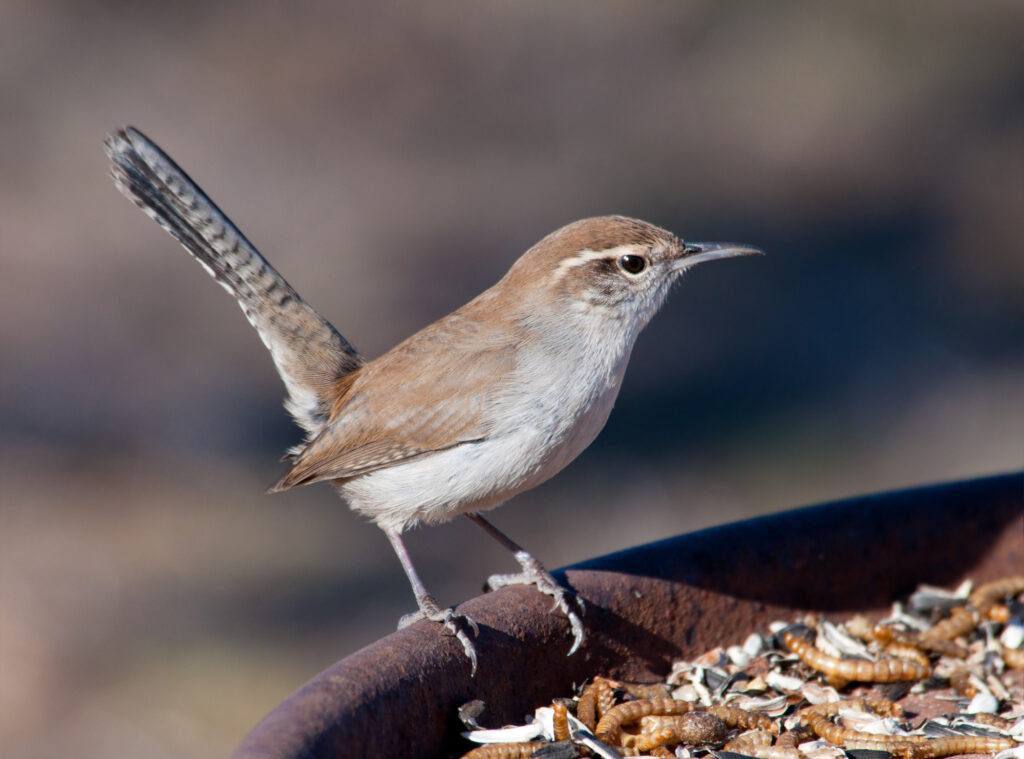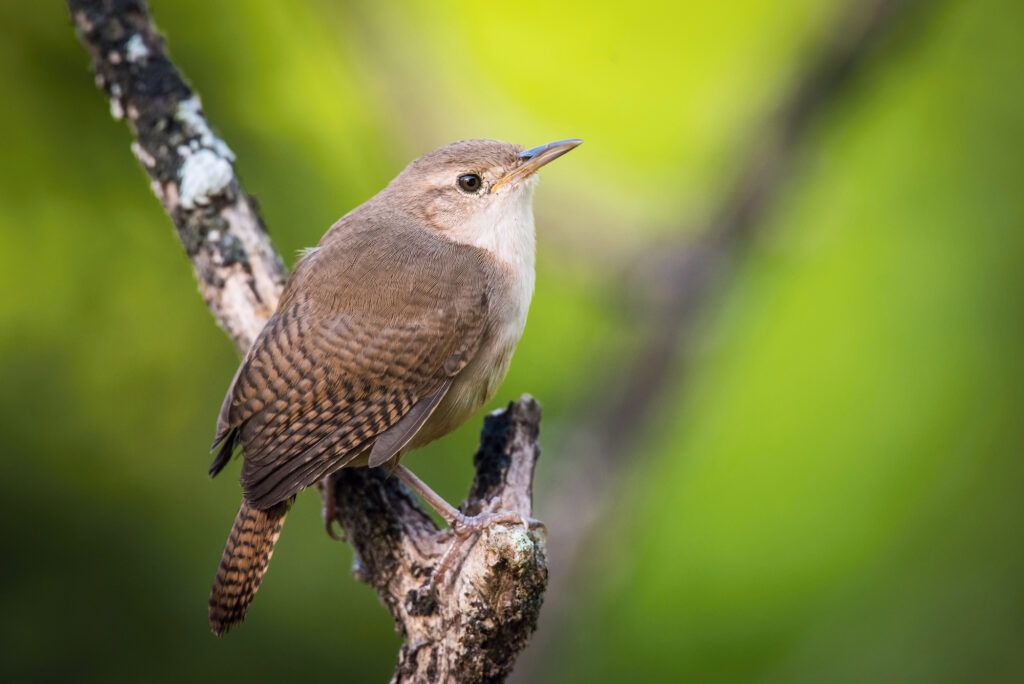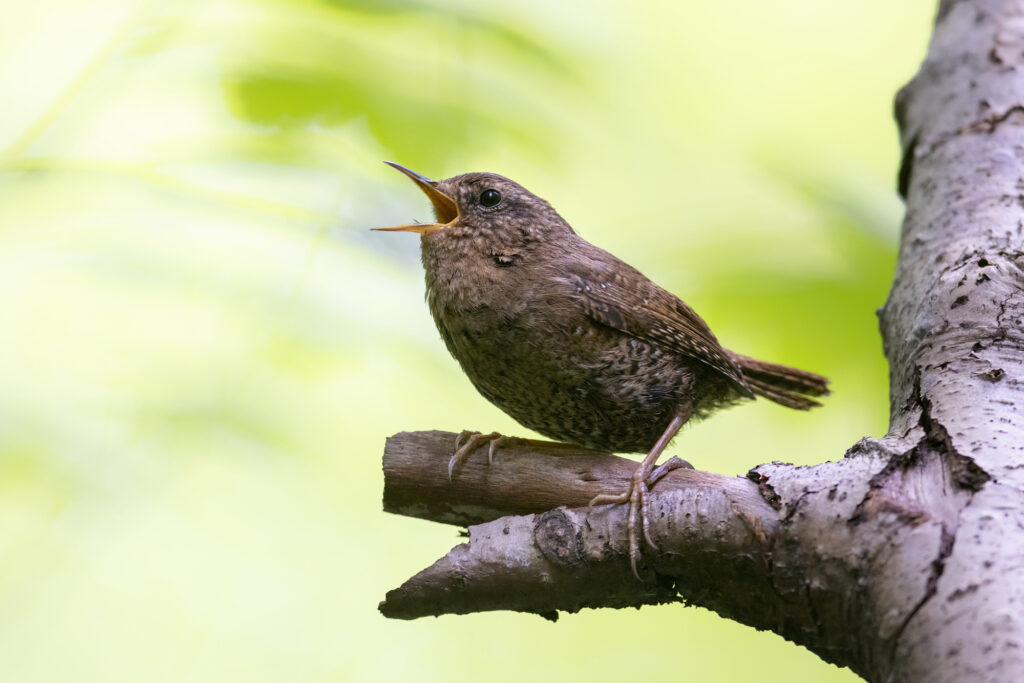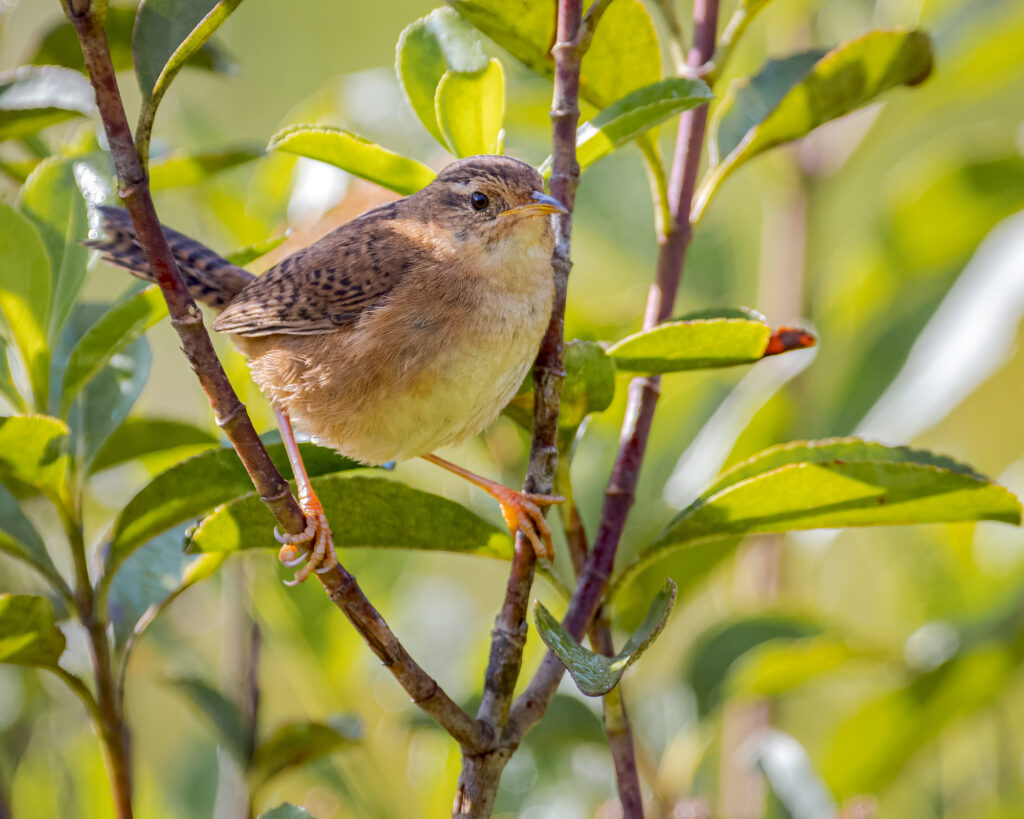As one of the largest and most diverse states of America, California boasts a bewildering array of bird life. There have been more than 600 species of birds recorded in the state since records began, including nine wrens.
Although only seven of them could be considered true residents, that’s still the majority of the eleven wrens that live in North America.
While the tiniest Pacific wrens find their refuge in the northern coniferous forests, the mighty cactus wrens feel more at home in the southern deserts.
It seems there’s a suitable habitat for almost every kind of wren in The Golden State, but you can make life even easier for wrens by offering them an overgrown corner of your garden and a suitable nestbox for them to overwinter or raise their young in.
But which wren is the most common in California, and which is the rarest? In this dedicated list, starting with the most frequently seen wrens and ending with the scarcest, you’ll discover all.
Wrens in California, Starting With the Most Common
Bewick’s Wren

- Scientific Name: Thryomanes bewickii
- Length: 5.1 in (13 cm)
- Weight: 0.3-0.4 oz (8-12 g)
- Wingspan: 7 in (17.8cm)
Although Bewick’s wren has been declining for many years in the eastern states, they remain the most frequently seen wren in California. Look out for them belting out their varied calls and distinctive songs, waving around their long tails, and pointing to the sky.
Perhaps one of the reasons that Bewick’s wren is more common in the southwest is that the drier habitats are less favored by their competitor, the house wren. These two birds often compete for nesting sites, with the fierce house wren usually taking the upper hand.
The white eyebrow and barred tail of Bewick’s wren make it an especially attractive species. They also have one of the most loveable songs in the family – a diverse repertoire of soothing trills and soft buzzes.
Bewick’s wren is often seen energetically foraging for insects and spiders, but can also sometimes be attracted to backyards in the winter by offering them suet and sunflower seeds at platform feeders and tube feeders.
House Wren

- Scientific Name: Troglodytes aedon
- Length: 4.3-5.1 in (11-13 cm)
- Weight: 0.3-0.4 oz (10-12 g)
- Wingspan: 5.9 in (15 cm)
Bewick’s main rival, the house wren, may be less numerous in California but still remains a fairly common bird in the Golden State. They can be seen around the year in the southwest, but only in the breeding season in the north and east of the state.
If you’re traveling to California, you may not immediately recognize the house wren, since the western population is more of a gray color than in the east. Their slender shape and subtle barring on their wings and tail, however, remain the same.
House wrens are wonderful birds to have in the backyard and you might just find their cheerful, energetic, and inquisitive nature quite infectious! You can attract them by leaving overgrown corners of the garden with piles of brush, as well as providing suitable birdhouses.
Listen out for the house wren’s bubbling, rattling trills. Their sweet songs are quite varied, so the song you’ll hear in the West may not be the same as in the East!
Marsh Wren

- Scientific Name: Cistothorus palustris
- Length: 3.9-5.5 in (10-14 cm)
- Weight: 0.3-0.5 oz (9-14 g)
- Wingspan: 5.9 in (15 cm)
There are no prizes for guessing where the marsh wren likes to spend most of its time, but its fidelity to marshy habitats is unwavering. You’ll rarely find these beautiful birds anywhere far from standing water except when they’re migrating.
This makes spotting marsh wrens quite difficult, so they might be more abundant than one would suppose. Look out for their white eyebrows and dark, almost black barring on their tails.
Marsh wrens are tiny but extremely territorial birds that will defend their nesting grounds with great vigor. They will destroy the eggs or nestlings of other birds, including other marsh wrens!
The western subspecies of marsh wren that you’ll find in California have a less musical song than their eastern relatives. Listen out for a fierce, rapid-fire series of mechanical rattles and trills that you’d expect from such a feisty little bird!
Pacific Wren

- Scientific Name: Troglodytes pacificus
- Length: 3.1-4.7 in (8-12 cm)
- Weight: 0.3-0.4 oz (8-12 g)
- Wingspan: 4.7-6.3 in (12-16 cm)
Another wren with a descriptive name, the Pacific wren rarely strays far from the Pacific coast. Still, they are not as common in California as they are in Oregon and Washington.
Their preference for a more northerly range isn’t surprising when one understands the Pacific wren’s favorite habitats. These secretive birds are most often found in damp, overgrown forests which are more typical in the Northwest USA and British Columbia.
This species is the West’s answer to the winter wren, an incredibly similar species that were thought to be synonymous until 2010! These two wrens are very hard to tell apart, but they share very little of the same range.
The Pacific wren’s Latin name Troglodytes means ‘hole dweller’, and these tiny birds will use nest boxes in the winter as well as summer! A record 31 individuals were found huddled together in a single nest box in Washington state in December 1924.
Rock Wren

- Scientific Name: Salpinctes obsoletus
- Length: 4.9-5.9 in (12.5-15 cm)
- Weight: 0.5-0.6 oz (15-18 g)
- Wingspan: 8.7-9.4 in (22-24 cm)
The rock wren is one of the larger but rarer species of wren in North America. Their pale grayish upper body, pinkish flanks, and long bill give them a unique, elegant appearance.
This western wren’s favorite haunts are dry canyons and boulder piles. Using its long bill, it searches and plucks out spiders and insects from crevices and cracks in the rocks.
They’re present year-round in rocky places throughout most of California, where you might see them bouncing up and down on top of rocks, singing their buzzy, high-pitched song.
Rock wrens have the remarkable habit of decorating their nest sites with a paving of rocks. The collection of rocks and stones can weigh more than 3 lb in total and is thought to provide multiple benefits including flood protection!
Canyon Wren

- Scientific Name: Catherpes mexicanus
- Length: 4.5-6.1 in (11.4-15.4 cm)
- Weight: 0.3-0.7 oz (9.9-18.3 g)
- Wingspan: 7.1-7.9 in (18-20 cm)
Despite being present year-round in California, the Canyon wren is only seen by about one in a hundred bird watchers in the state.
But the rarity of this bird only makes encountering one all the more special. Canyon wrens are an especially beautiful species with a pretty white throat and the longest bill (in proportion to its body) of any wren.
Canyon wrens don’t disappoint when it comes to their singing either. Their soothing voice cascading over dramatic landscapes in which they live is a solace to the soul.
This southwesterly species uses its long bill to tease out insects and spiders from vertical cliffs. Amazingly, the Canyon wren has never been seen drinking water and is thought to obtain its entire liquid sustenance from its juicy invertebrate prey!
Cactus Wren

- Scientific Name: Campylorhynchus brunneicapillus
- Length: 7.1-8.7 in (18-22 cm)
- Weight: 1.1-1.7 oz (32-47 g)
- Wingspan: 11 in (28cm)
Another species partial to dry landscape, the cactus wren is the largest wren in North America. In many ways, its size and habits are more reminiscent of thrashers than its wren relatives.
This distinctive wren has a wingspan of nearly a foot across, a speckled chest, and long, white eyebrows.
Cactus wrens are typically only seen in the drier regions of Southern California where they inhabit coastal sagebrush and low cactus scrub.
In the wild, cactus wrens feed on insects, fruit, seeds, and even small lizards. When other food is scarce, they may be coaxed to visit backyard bird feeders, too.
Two That Got Away
There are two more species of wren that have been recorded in California, but can only be regarded as accidentally occurring here.

Both from the east, sedge wrens (Cistothorus platensis) and winter wrens (Troglodytes hiemalis) have both made odd appearances in California, but couldn’t be listed as true residents.

Conclusion
California’s diverse habitats provide a range of homes from a wealth of wren species.
Whether you’re enjoying a family of house wrens nesting on your back porch, or tracking down the elusive Canyon wren in the King’s Canyon National Park, there are endless chances to encounter these loveable birds.
Other than wrens, there are too many fascinating bird species in California to mention here. That’s why we’ve compiled a list of the most iconic and dazzling of them in our Birder’s Guide to the Golden State.

